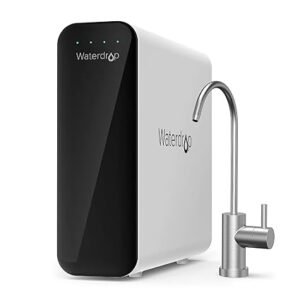Understanding Bacteria: Types and Effects
Bacteria are unicellular microorganisms that exist in various forms, playing crucial roles in ecosystems and human health. They can be categorized into two primary types: beneficial and harmful bacteria. Beneficial bacteria, such as those found in the human gut microbiome, contribute to essential bodily functions including digestion, immune response, and even mental health. These microorganisms help maintain a delicate balance within our bodies, facilitating nutrient absorption and preventing the overgrowth of pathogenic bacteria.
Conversely, harmful bacteria are responsible for a range of diseases and infections. Strains such as Escherichia coli, Salmonella, and Staphylococcus aureus can lead to severe health issues if introduced into the human body, typically through contaminated food, water, or surfaces. The effects of these harmful bacteria can range from mild gastroenteritis to serious conditions requiring medical intervention. Understanding the impact of these pathogens is vital for implementing effective sanitation and hygiene practices.
Common sources of harmful bacteria in our environment include improperly cooked or stored foods, unclean water supplies, and frequently touched surfaces that may harbor germs. Items like kitchen countertops, bathroom fixtures, and even mobile devices can become breeding grounds for bacteria if not cleaned regularly. Awareness of these sources is essential for anyone aiming to maintain a healthy living space and reduce the risk of bacterial infections.
Maintaining a harmonious balance between beneficial and harmful bacteria is crucial for overall health. Employing effective strategies to remove and control harmful bacteria can significantly reduce the risk of disease, ensuring a healthier environment for individuals and communities alike. By recognizing the various types of bacteria and their sources, individuals can take proactive steps toward enhancing their health and well-being.
Effective Methods for Bacteria Removal
Managing bacterial presence in various environments requires an understanding of the most effective methods for bacteria removal. Traditional cleaning methods, such as the application of soap and water, play an essential role in dislodging bacteria from surfaces. The mechanical action of scrubbing, combined with the surfactants in soap, can effectively remove dirt and germs, preparing surfaces for further disinfection. It is crucial to emphasize that merely using soap and water may not eliminate all microorganisms, particularly in situations where a higher level of sanitation is demanded.
In addition to traditional techniques, disinfectants are widely employed for their ability to kill bacteria on contact. These chemical agents come in various formulations, including sprays and wipes, containing active ingredients like bleach or alcohol. When using disinfectants, it is vital to follow the manufacturer’s instructions regarding contact time, recommended dilution, and surface compatibility to achieve optimal results. Awareness of safety precautions is also necessary to avoid potential hazards associated with chemical exposure.
Advanced technologies such as ultraviolet (UV) light have emerged as innovative solutions for bacteria removal. UV light operates by emitting short wavelengths that disrupt bacteria’s DNA, rendering them incapable of reproduction. This method is particularly effective in spaces requiring rapid sanitation, such as hospitals and public transport systems. However, it is important to recognize that direct exposure to UV light poses health risks to humans, necessitating careful implementation.
Steam cleaning represents another effective method, utilizing high-temperature steam to kill bacteria on various surfaces. This technique provides a chemical-free alternative while effectively sanitizing fabrics, carpets, and hard surfaces. To enhance the effectiveness of these methods, it is essential to adopt best practices aimed at preventing bacterial growth. Regular cleaning schedules, maintaining optimal humidity levels, and ensuring proper ventilation are vital components in promoting a healthy environment and mitigating bacteria proliferation.








Reviews
There are no reviews yet.